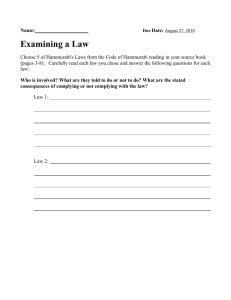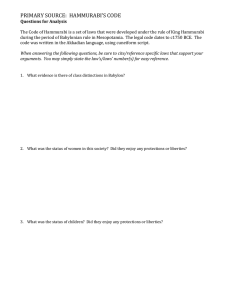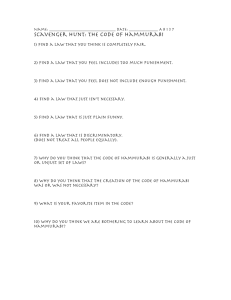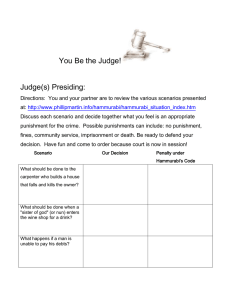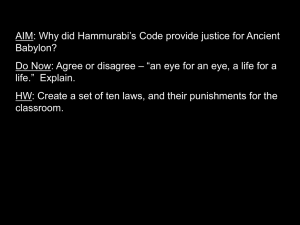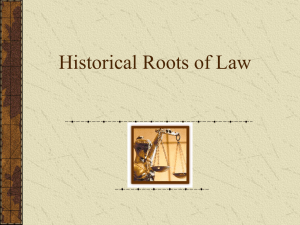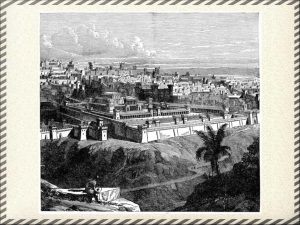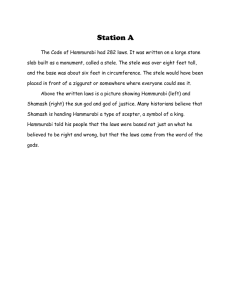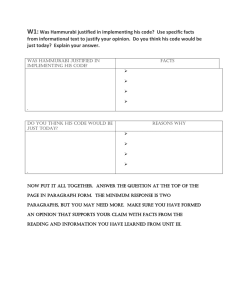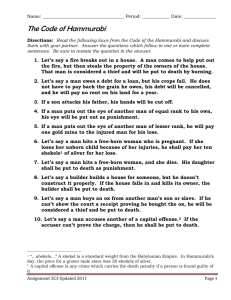Name: Period:_____ Hammurabi`s code The Code of Hammurabi is
advertisement
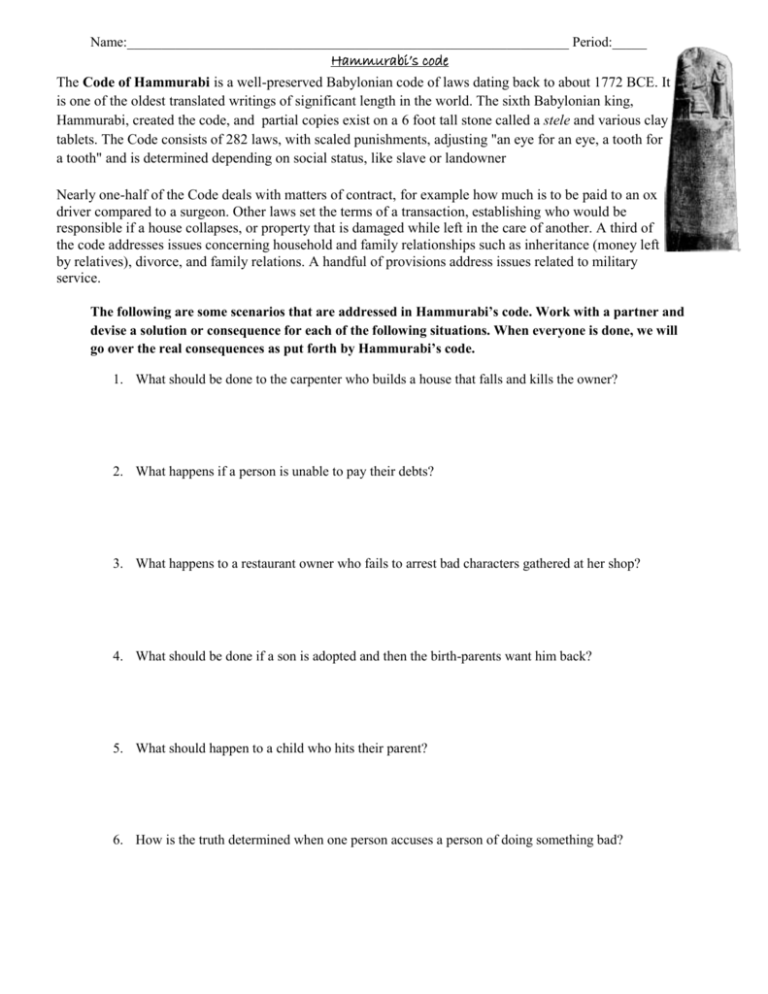
Name:________________________________________________________________ Period:_____ Hammurabi’s code The Code of Hammurabi is a well-preserved Babylonian code of laws dating back to about 1772 BCE. It is one of the oldest translated writings of significant length in the world. The sixth Babylonian king, Hammurabi, created the code, and partial copies exist on a 6 foot tall stone called a stele and various clay tablets. The Code consists of 282 laws, with scaled punishments, adjusting "an eye for an eye, a tooth for a tooth" and is determined depending on social status, like slave or landowner Nearly one-half of the Code deals with matters of contract, for example how much is to be paid to an ox driver compared to a surgeon. Other laws set the terms of a transaction, establishing who would be responsible if a house collapses, or property that is damaged while left in the care of another. A third of the code addresses issues concerning household and family relationships such as inheritance (money left by relatives), divorce, and family relations. A handful of provisions address issues related to military service. The following are some scenarios that are addressed in Hammurabi’s code. Work with a partner and devise a solution or consequence for each of the following situations. When everyone is done, we will go over the real consequences as put forth by Hammurabi’s code. 1. What should be done to the carpenter who builds a house that falls and kills the owner? 2. What happens if a person is unable to pay their debts? 3. What happens to a restaurant owner who fails to arrest bad characters gathered at her shop? 4. What should be done if a son is adopted and then the birth-parents want him back? 5. What should happen to a child who hits their parent? 6. How is the truth determined when one person accuses a person of doing something bad?
